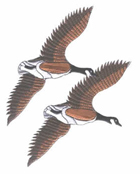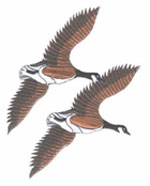The New Zealand Special Air Service (NZ SAS) was formed on 7 July 1955 and is a Special Forces unit of the New Zealand Army modelled on the British Special Air Service (SAS). The New Zealand Government states that NZ SAS is the "premier combat unit of the New Zealand Defence Force", is based in Auckland, and has the motto “who dares wins”. Its key roles are to undertake overseas missions and respond to domestic terrorist attacks. The New Zealand SAS is held in high regard internationally, as demonstrated by the United States Presidential Citation which was awarded to the NZSAS on 7 December 2004.
Formation
The NZSAS can trace its roots back to the famous Long Range Desert Group, a British/Commonwealth army unit which fought in the North African desert in World War II. A number of New Zealanders also served in the original Special Air Service force during World War II. In February 1955 it was decided by the New Zealand Government that a squadron based on the British Special Air Service should be formed as part of the New Zealand Army, as an effective and economic contribution to the Far East Strategic Reserve and the British counter-insurgency effort in Malaya. Major Frank Rennie was appointed to form and command the unit, with the decision having been made to recruit mainly from the general public around a cadre of Regular Force personnel. Over 800 applied, from which 182 including 138 civilians (though 101 had previous military experience) were selected for training beginning in June 1955.
Malaya and Borneo
In late 1955 the 133-strong NZSAS Squadron was attached to the British SAS in Malaya. It spent 18 of the 24 months it was in Malaya operating in the jungle against communist insurgents. As well as being tasked with fighting the communist forces they were also charged with collecting up and training villagers to fight as well. In over a dozen major engagements only one NZSAS trooper was killed. Soon after the unit was disbanded, having been operationally replaced by an Infantry Battalion.
The NZSAS was also involved in countering Indonesian Communist insurgents in Borneo alongside their British and Australian counterparts.
Vietnam
Based in Nui Dat, Vietnam, the NZ SAS 4 Troop served under Australian command in November 1968, attached to the Australian SASR. Here NZSAS was named 1st Ranger Squadron, NZSAS, the new name recalling the Forest Rangers commanded by von Tempsky during the New Zealand Wars. Most tasks involved ambush of enemy forces and conducting reconnaissance missions observing the enemy. The NZSAS troopers were involved in the South Asia conflict from 1968 to the early 1970s.
Kuwait 1998
Twenty-four NZSAS personnel were deployed to Kuwait in February 1998 under 'Operation Griffin' during a period of international tension with Iraq, tasked with rescuing downed airmen in hostile territory in the event of a US-led aerial campaign. A smaller force replaced them in May 1998 for a further two-month tour. There were no missions into Iraq undertaken during the deployment, though it was considered a useful opportunity to practise mobile desert warfare skills, and to have contact with US Forces; which had been limited since the United States suspended its ANZUS relations with New Zealand in 1986.
Afghanistan 2001–2005
Starting in late 2001, the NZ SAS began operations assisting in the War on Terrorism in Afghanistan. Three 6 month rotations of between 40 and 65 soldiers from the NZ SAS served in Afghanistan during Operation Enduring Freedom before the unit was withdrawn in November 2005. On 17 June 2004, two NZ SAS soldiers were wounded in a pre-dawn gun-battle in central Afghanistan. In recognition of his actions during this engagement, SAS trooper Willie Apiata was awarded the Victoria Cross for New Zealand.
Secrecy still surrounds much of the NZ SAS's operations in Afghanistan, although a Radio New Zealand news piece claimed the service had maintained a mission success rate of 100%. Initially the unit conducted foot patrols with insertion and extraction being by helicopter, but in May 2002 the focus changed to mobility patrols using borrowed Humvees, and later motorbikes and NZ Army Pinzgauers. These patrols would often last 20 to 30 days and cover between 1000 and 2000 kilometres. There were "casualties on both sides" during gun battles, but no New Zealanders were killed.
Presidential Unit Citation
In December 2004, the United States Navy Presidential Unit Citation was awarded to those units that comprised the Combined Joint Special Operations Task Force-SOUTH/Task Force K-BAR between 17 October 2001 and 30 March 2002 for "extraordinary heroism" in action. One of these units was the Special Air Service of New Zealand.
The citation said SAS units helped "neutralise" Taliban and al Qaeda in "extremely high risk missions, including search and rescue, special reconnaissance, sensitive site exploitation, direct action missions, destruction of multiple cave and tunnel complexes, identification and destruction of several known al Qaeda training camps, explosions of thousands of pounds of enemy ordnance."
"They established benchmark standards of professionalism, tenacity, courage, tactical brilliance and operational excellence while demonstrating superb esprit de corps and maintaining the highest measures of combat readiness."
Victoria Cross
It was announced on 2 July 2007 that Corporal Willie Apiata of the NZ SAS, aged 35, had been awarded the Victoria Cross for New Zealand for carrying a severely injured comrade 80 metres "under heavy fire" from machine-guns, RPGs and grenades after their vehicle was destroyed in an ambush and then joined the rest of his comrades in a counter-attack.
The announcement was unusual, because the NZ SAS is a very secretive organisation that almost never reveals the names of its members. Prime Minister Helen Clark said Apiata's name was revealed because it was only the 14th time since World War 2 that the Victoria Cross had been awarded among the 53 nations of the Commonwealth, and the first to a serving SAS soldier anywhere, and it would be almost impossible to keep secret. In addition to Cpl. Apiata, three other SAS soldiers were decorated for actions during the same mission.
In April 2008, Apiata donated his Victoria Cross medal to the NZSAS Trust, so that "The medal is protected for future generations". The medal remains available to Apiata and his family to wear.
Afghanistan 2009–2011
71 NZSAS troops returned for a fourth deployment in 2009. These troops arrived in Afghanistan in September, and their location was revealed in the Norwegian press. New Zealand would provide three rotations of SAS troops in 2009–2011. This is the fourth SAS deployment to Afghanistan, the last being in 2005. A small number of NZSAS personnel were among the forces which responded to the January 2010 attack in central Kabul.
Current organisation
- 1 New Zealand SAS Group
- Headquarters Support Wing
- Training Wing
- A SAS Squadron (Air, Boat, and Mountain Troops)
- B SAS Squadron (Air, Boat, and Mountain Troops)
- Commando Squadron (formerly Counter Terrorist Tactical Assault Group)
- EOT (Engineer Operations Troop)
Commando
The Commando Squadron (formerly Counter Terrorist Tactical Assault Group) was formed post 2000 in a bid to provide a dedicated counter terrorist capability within 1 NZSAS and the New Zealand Defence Force.
The group consists of an undisclosed number of fully-badged SAS soldiers with a smaller cadre of Commando soldiers. Though officially part of 1 NZSAS Gp, Commando members do not pass through the full NZSAS selection course, but complete an abridged 7 day selection which is more relevant to Commando operational requirements. They do not wear the SAS's 'winged dagger' cap badge or blue stable belt, though they do wear the sand beret with the Commando badge and stable belt. The Commando Squadron has the role of responding to domestic terrorist and special recovery incidents in New Zealand.
The Commando Squadron is composed of members of all three armed Services; New Zealand Army, Royal New Zealand Navy and the Royal New Zealand Air Force under the control of CO 1NZSAS Gp. The assessment criteria is rigorous and involves a separate selection course from NZSAS applicants. Candidates must be at least 20 years of age to qualify for Commando training and of the highest calibre physically, professionally and mentally. Once a Commando member completes selection and training they are ready to respond to a domestic threat in a matter of hours. The Commando Squadron are based full time alongside the badged squadrons at the Papakura Military Camp in Auckland. The Commando Squadron also use the Ardmore Military Camp to conduct their Close Quarter Battle urban, dynamic entry and room clearing drills as well as their sniping skills.
A Commando Group is split into two teams, the sniping team and the assault team. It is also not uncommon to see the Commando Squadron driving around Auckland conducting covert training sessions amongst civilians. They use a number of Nissan Patrol 4WD vehicles, similar to the ones used by civil police's Special Tactics Group. They also use the Ford Transit van to conduct covert surveillance and transport additional weapons.
Selection
To join the NZSAS, NZ Army, Navy, or Air Force personnel must successfully pass a ten-day (two days pre-selection, eight days selection) selection course held in Waiouru. Selection as it is known to service people was described to the Weekend Herald by a participant as "mental and physical torture". The first day covers all of the fitness tests in the NZ army, completed to the NZSAS standard. This is followed by three days of open country navigation while carrying a 35 kg pack and rifle, with a minimum of food and sleep metered out.
Among the exercises is the notorious 'Exercise Von Tempsky' which is executed on the fifth day of selection course. Von Tempsky consists of 24 hours of marching in either a swamp or sand dunes while carrying rifles and alternately one or two 20-litre jerrycans and a 35 kg ALICE pack. The final exercise is a 60-kilometre endurance march, carrying a 35 kg pack, web gear and rifle to be completed in under 20 hours.
Officers undergo an additional two days of selection to test for the their suitability to lead NZSAS soldiers.
Even if candidates make it through the selection course, they must pass psychological, medical and academic tests (plus others) to be chosen for the nine-month SAS training course.
Candidates do not receive the coveted SAS beret and Corps belt, until they have successfully completed the nine month basic cycle of training.
On average 10-15% of candidates pass both selection and cycle training.
Notable Members
- Willie Apiata VC - first recipient of the Victoria Cross for New Zealand.
- Mike Coburn - later joined 22 SAS and was a member of the much publicised Bravo Two Zero patrol.
- Barrie "Baz" Rice - star of Treasure Island: Extreme.
Memorial
The regimental memorial, known as the "Granite Parachute", is at Rennie Lines, Papakura Military Camp. Inscribed upon it is an extract from the poem Hassan by James Elroy Flecker:
We are the Pilgrims, master; we shall go
Always a little further: it may be
Beyond that last blue mountain barred with snow
Across that angry or that glimmering sea …
Source



